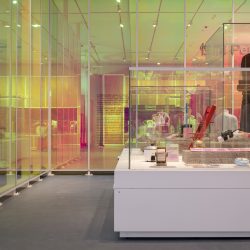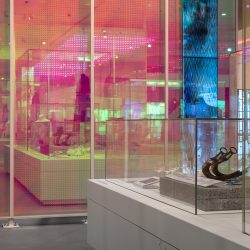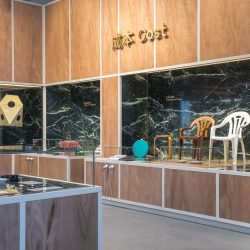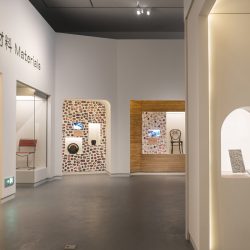THE DEBUT EXHIBITION OF SHENZHEN’S DESIGN SOCIETY ASKS ‘WHAT ARE THE VALUES OF DESIGN?’
Of all the phenomena that have succeeded Deng Xiaoping’s 1978 ‘reform and opening-up’ policy (apart from the unprecedented leap in China’s economic history), the ‘Museum Boom’ is probably what we find to be the most interesting. It has been said that when the Chinese Communist Party was beginning to form China into a people’s republic back in 1949, the country had only around 20 active museums with a number of them being burnt down during the Cultural Revolution. But the skyrocketed number of 200 museums now being open annually, which currently totals up to 5,000, seems to reflect a certain deviation of the phenomenon whose future direction is too difficult to speculate. Surely, among the large number of museums of mediocre quality, finding a couple of decent museums is not easy. Having said that, the recently opened newbie that goes by the name ‘Design Society’ stands out as one of the good ones, and we’re about to find out why.
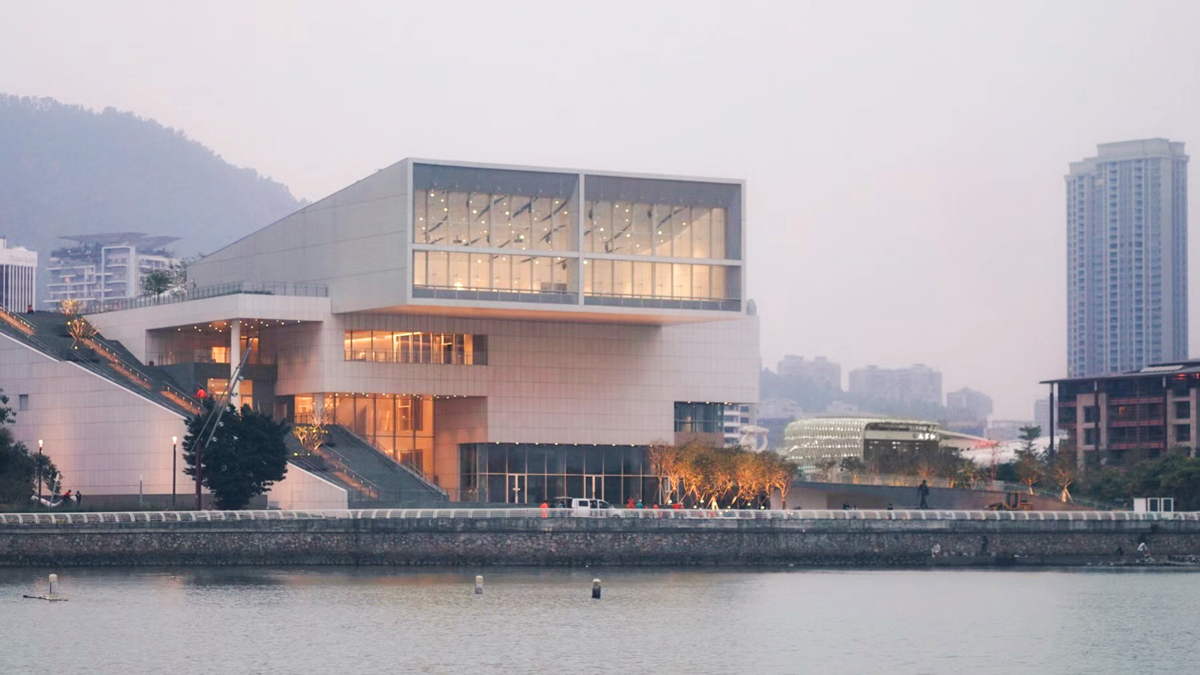
Emerging as the latest cultural space of Shenzhen’s Shekou neighborhood, Design Society is made up of many ‘first of its kind’ elements. It’s the result of the first collaboration between Great Britain’s renowned Victoria & Albert Museum (V&A) and Shenzhen’s China Merchants Shekou Holdings. It is located in the Sea World Culture and Arts Center, the first building by legendary architect, Fumihiko Maki, to ever be constructed in China. It also presents itself as China’s first design museum (so they say) with all the content being dedicated exclusively to design. Being first does not make Design Society the rookie of the industry, and its level of professionalism is nothing to be doubted. The people who are behind the making of the museum were carefully selected from the country’s thriving design industry with the V&A sending its team of experts to support different aspects of the project. The museum also has Ole Bouman, the former director of Netherlands Architecture institute (NAi) sitting as the Founding Director. ‘Minding the Digital,’ Design Society’s debut exhibition in the Main Gallery has MVRDV designing the space with the content being curated to showcase the potential and possibilities of modern day’s design and its growing connections with digital technology. The museum also houses another debut exhibition that will be featured until 2019, with content that we will be discussing more in this article. Titled ‘Values of Design,’ the exhibition took over the space of V&A Gallery with the curatorial team from V&A overseeing the content that helps clarifying our perception towards the way design has been valued.

The exhibition takes off with a quote taken from Canadian graphic designer, Robert L. Peters, “Design creates culture. Culture shapes values. Values determine the future,” which provides a rough outline of the relationship between design, culture, values and the future. It later takes viewers to explore the connection between a general understanding of the values of design through the exhibition space, which is divided into 7 zones; Performance, Cost, Problem-Solving, Materials, Identity, Communication and Wonder, each representing a factor that contributes to an increase in the values of design. While the presentation of the content is far from dramatic (which is understandable considering the fact that the subject of the exhibition like ‘Values of Design’ is not that complicated or difficult to comprehend), luckily, Sam Jacob’s energetic use of colors and materials for the design of the space keeps the overall vibe more exciting (compared to the other debut exhibition with less impressive details). The credit also goes to the curatorial team who was able to tell the story through different design objects because it isn’t an easy task to select only 250 out of the hundreds of thousands of items from V&A’s collection and use them in an interesting, well-composed and comprehensive narrative.
Perhaps it’s the simplicity of the presentation that makes the exhibition an ideal choice for Design Society’s debut exhibition. On this new platform, the exhibition helps lay down the foundation that allows for the general public to not only have a better understanding of design, but also further question the values of the existing design works. “As our social media feeds fill up with feel-good stories (a clever slum-upgrade here, or an affordable laptop designed for poverty-stricken schools there) there’s an increasing skepticism about the real efficacy of these projects.” Brendan Cormier, the exhibition’s curator, raises an interesting question back to the viewers with his observation before later adding that it’s becoming more obvious now that while design is able to offer solutions, it can be part of all kinds of problems at the same time.
While certain thoughtless additions can make a design attain a higher ‘price’ or level of ‘luxuriousness,’ perhaps what should really be increased is the ‘values’ of a design work. Several products and services from China can serve as exemplifications of this case. But amidst the deviated values of design in this country, there are several other great examples that can be applied to Thailand, particularly the approach and recognition of the values of design at a larger scale. Beyond the development of design products are the government’s policies and construction of cultural infrastructures, which contributed to the birth of the aforementioned Museum Boom phenomenon. While such policies might have led to a large number of museums with many of them being low in quality, one of the objectives of its implementation is to create a greater understanding of creativity among the people. Even the ‘From Made in China to Created in China’ policy, which aims to transform the country’s role and value through the shift from a leading production base to a leading innovator, is the manifestation of an interesting use of creativity as a tool to move the country forward. As a nation, what we can do with these policies is learn, choose and apply the ones that best resonate with the nature of our country while the governmental sector, as the key mechanism, needs to function with great understanding of and motivation to develop this country together with the people.

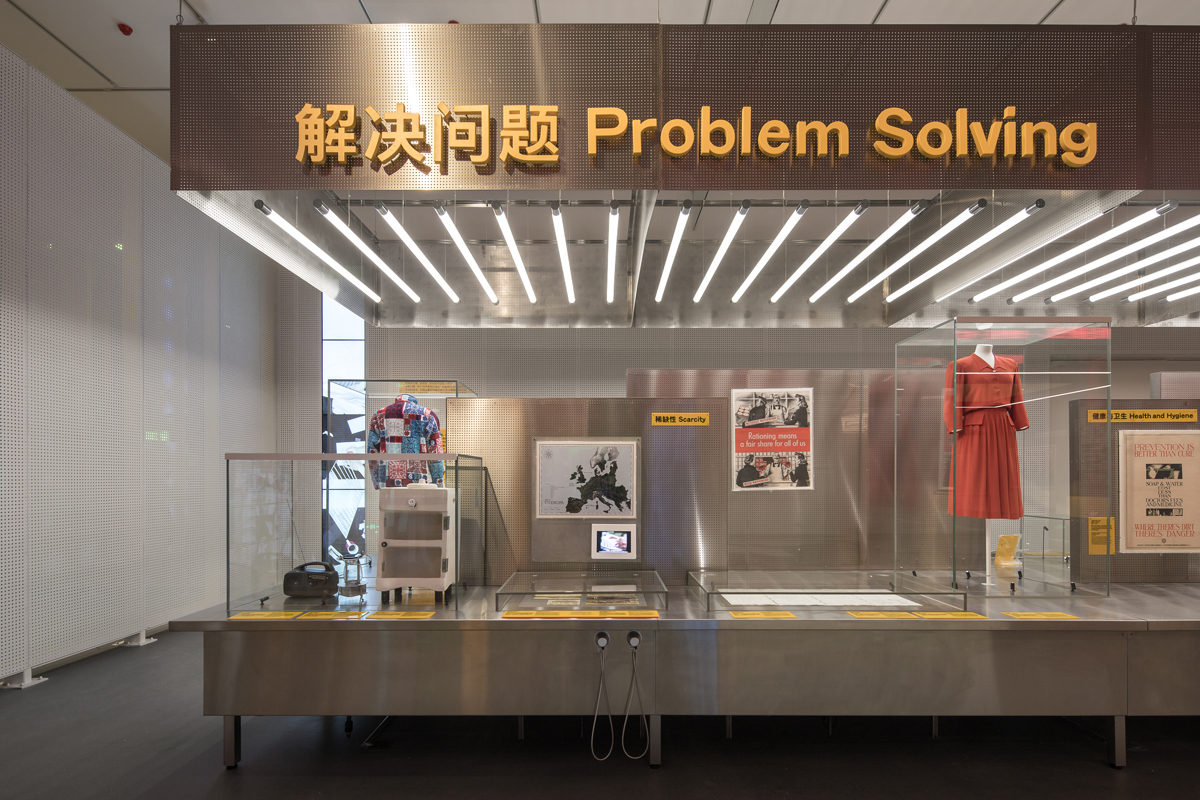
ในบรรดาปรากฏการณ์ต่างๆ ที่เกิดขึ้นตามมาหลังการประกาศใช้นโยบาย ‘ปฏิรูปและเปิดออก’ ของเติ้ง เสี่ยวผิง ในปี 1978 นอกเหนือไปจากการโตขึ้นแบบก้าวกระโดดอย่างที่ไม่เคยมีมาก่อนในประวัติศาสตร์ของเศรษฐกิจจีน ก็เห็นจะมีค่านิยมที่เรียกกันว่า Museum Boom นี่แหละที่เราคิดว่าน่าสนใจ ว่ากันว่าสมัยที่พรรค คอมมิวนิสต์จีนเพิ่งจะเริ่มสถาปนาสาธารณรัฐประชาชนจีนขึ้นมาเมื่อปี 1949 จำนวนพิพิธภัณฑ์ในจีนเคยมีอยู่แค่ประมาณ 20 กว่าแห่งเท่านั้น หนำซ้ำยังต้องมาโดนเผาทำลายลงตอนช่วงปฏิวัติวัฒนธรรมอีก อย่างไรก็ตาม จำนวนพิพิธภัณฑ์ที่เพิ่มขึ้นเรื่อยๆอย่างน่าตกใจ เฉลี่ยปีละ 200 แห่ง จนตัวเลขวิ่งขึ้นไปเกือบจะแตะที่ 5,000 ในปัจจุบัน ดูจะสะท้อนความผิดเพี้ยนบางอย่างของปรากฏการณ์ที่ว่านี้ และเราเองก็เดาทางไม่ถูกเหมือนกันว่ามันจะไปจบลงที่ไหน แน่นอนว่าท่ามกลางพิพิธภัณฑ์จำนวนมากแต่ไร้คุณภาพจนล้นเอ่อแบบนี้ การที่จะหาพิพิธภัณฑ์ดีๆ สักแห่งสองแห่งนั้นไม่ใช่เรื่องง่ายเลย แต่พิพิธภัณฑ์น้องใหม่ที่เพิ่งเปิดให้บริการไปเมื่อปลายปีอย่าง Design Society ก็จัดเป็นหนึ่งในตัวอย่างของพิพิธภัณฑ์ที่ดีและน่าสนใจที่เราอยากจะแนะนำให้ได้รู้จักกัน
Design Society พื้นที่ทางวัฒนธรรมล่าสุดในย่าน Shekou ของเสินเจิ้น ถือเป็นสถานที่ที่รวบรวมความเป็น “แห่งแรก” เอาไว้ในที่เดียวในหลายกรณีด้วยกันตั้งแต่การร่วมมือกันครั้งแรกของพิพิธภัณฑ์ Victoria & Albert (V&A) ที่มีชื่อเสียงของอังกฤษกับกลุ่มธุรกิจ China Merchants Shekou Holdings ของเสินเจิ้น การตั้งอยู่ใน Sea World Culture and Arts Center อาคารหลังแรกที่ถูกสร้างขึ้นในจีนของสถาปนิกระดับตำนาน Fumihiko Maki ไปจนถึงการเป็นพิพิธภัณฑ์แห่งแรกของจีนที่ (เขาว่ากันว่า) มีเนื้อหาเกี่ยวข้องกับงานออกแบบโดยเฉพาะ แต่ถึงแม้ว่าจะเป็นแห่งแรกก็ตาม มันก็ไม่ได้หมายความว่า Design Society จะกลายเป็นมือใหม่ของวงการและต้องขาดความเป็นมืออาชีพ เอาเข้าจริงทีมงานเบื้องหลังแต่ละคนได้ถูกคัดเลือกมา ทั้งจากแวดวงการออกแบบของจีนและจาก V&A ที่ส่งทีมมาช่วยสนับสนุนในแต่ละด้าน แถมงานนี้ยังได้ Ole Bouman อดีตผู้อำนวยการของ Netherlands Architecture institute (NAi) มานั่งแท่นเป็น Founding Director ด้วย ทั้งนี้ นิทรรศการเปิดของ Design Society นอกเหนือไปจาก ‘Minding the Digital’ ในห้อง Main Gallery ที่ได้ MVRDV มาเป็นคนออกแบบสเปซ จะโชว์ให้เราได้เห็นศักยภาพและความเป็นไปได้ของงานออกแบบในปัจจุบันที่เกี่ยวโยงอยู่กับเทคโนโลยีดิจิตอลแล้ว ก็ยังมีอีกนิทรรศการเปิดที่จะจัดยาวไปจนถึงปี 2019 ที่เราอยากจะพูดถึงเป็นพิเศษในบทความนี้ นั่นคือ ‘Values of Design’ ของห้อง V&A Gallery ที่ได้ทีมคิวเรเตอร์จาก V&A เข้ามาช่วยทำให้มุมมองของเราที่เกี่ยวกับ “คุณค่าของงานออกแบบ” ชัดเจนยิ่งขึ้น
นิทรรศการเริ่มต้นด้วยการยกวลีเด็ดของนักออกแบบกราฟิกชาวแคนาดา Robert L. Peters อย่าง “Design creates culture. Culture shapes values. Values determine the future.” มาเกริ่นนำให้เราพอเห็นความสัมพันธ์แบบกลายๆ ของงานออกแบบ วัฒนธรรม คุณค่า และอนาคตก่อนที่จะพาเราไปสำรวจความสัมพันธ์ระหว่างความเข้าใจในเรื่องของคุณค่าและของงานออกแบบผ่านการแบ่งพื้นที่นิทรรศการออกเป็น 7 โซน ตามปัจจัยต่างๆ ที่เข้ามามีส่วนเพิ่มมูลค่าให้กับงานออกแบบ ได้แก่ Performance (สมรรถนะ), Cost (ค่าใช้จ่าย), Problem-Solving (การแก้ปัญหา), Materials (วัสดุ), Identity (อัตลักษณ์), Communication (การสื่อสาร) และ Wonder (ความพิศวง) โดยถึงแม้ว่านิทรรศการในครั้งนี้จะนำเสนอเนื้อหาออกมาได้ไม่ค่อยหวือหวาสักเท่าไร เพราะด้วยประเด็นเกี่ยวกับ “คุณค่าของงานออกแบบ” นั้นก็ไม่ใช่เรื่องที่ซับซ้อนและยากที่จะเข้าใจอยู่แล้ว แต่ก็ยังโชคดีที่ได้สีสันและการเลือกใช้วัสดุจากการออกแบบสเปซของ Sam Jacob มาช่วยดึงบรรยากาศให้ดูน่าตื่นเต้นขึ้น (ผิดกับอีกนิทรรศการที่เก็บดีเทลของงานไม่ค่อยดีเท่าไร) และก็ต้องชื่นชมทีมงานด้วยเช่นกันที่สามารถเล่าเรื่องผ่าน design object ต่างๆ ออกมาได้อย่างน่าสนใจ เพราะเอาเข้าจริงมันคงไม่ใช่เรื่องง่ายที่จะคัดเลือกสิ่งของจากคอลเล็คชั่นของ V&A ที่มีอยู่เป็นแสนๆ ชิ้นให้เหลือเพียง 250 ชิ้น ที่ยังสามารถเล่าเรื่องง่ายๆ ให้ได้ใจความสาระครบถ้วนแบบนี้ได้
อาจเพราะความไม่สลับซับซ้อนของการนำเสนอในลักษณะนี้ จึงทำให้นิทรรศการดังกล่าวค่อนข้างจะเหมาะสมที่จะเป็นนิทรรศการเปิดของแพลตฟอร์มใหม่อย่าง Design Society โดยนอกจากจะได้ช่วยปูพื้นฐานให้กับผู้ชมทั่วไปเข้าใจเกี่ยวกับงานออกแบบได้ง่ายยิ่งขึ้นแล้ว ก็ยังอาจทำให้พวกเขาตั้งคำถามต่อไปได้ถึงงานออกแบบที่เห็นกันอยู่ในปัจจุบันได้ว่ามันมีคุณค่าในระดับไหน ซึ่งถ้าพูดถึงในมุมนี้ Brendan Cormier คิวเรเตอร์ของนิทรรศการเองก็โยนความคิดของเขากลับมาหาเราได้อย่างน่าสนใจว่า “ในขณะที่โซเชียลมีเดียของพวกเราต่างก็เต็มไปด้วยเรื่องราวดีๆ มากมาย ไม่ว่าจะการปรับปรุงสลัมอย่างชาญฉลาดหรือแลปท็อปที่ถูกออกแบบมาสำหรับโรงเรียนที่มีฐานะยากจน ความกังขาว่าโครงการเหล่านี้มันมีประสิทธิภาพจริงๆ สักแค่ไหนมันก็เพิ่มขึ้นด้วยเช่นกัน” ก่อนที่จะเสริมว่าทุกวันนี้มันชัดเจนขึ้นกว่าเดิม ว่าในขณะที่งานออกแบบนั้นสามารถแก้ปัญหาต่างๆ ได้ตัวมันเองก็อาจจะเป็นส่วนหนึ่งที่ทำให้เกิดปัญหาต่างๆ ได้อีกด้วย
บางครั้งงานออกแบบที่ถูกเพิ่มอะไรลงไปโดยไม่ได้ไตร่ตรองให้ดีเสียก่อน อาจทำได้เพียงแค่เพิ่ม “ราคา” หรือ “ความหรูหรา” ให้กับมันเท่านั้น ทั้งๆ ที่แท้จริงแล้ว “มูลค่า” ต่างหากที่สมควรจะเป็นสิ่งที่ถูกเพิ่มขึ้นมา กรณีเหล่านี้พบได้ในสินค้าและบริการหลายชนิดของจีน แต่ถึงอย่างนั้น ท่ามกลางความผิดเพี้ยนของการ เพิ่มคุณค่าของงานออกแบบในประเทศจีน ก็ยังมีตัวอย่างดีๆ อีกหลายกรณีที่เราสามารถหยิบมาปรับใช้กับบ้านเราได้อยู่เหมือนกัน โดยเฉพาะอย่างยิ่ง การเพิ่มคุณค่างานออกแบบให้กับประเทศในสเกลที่ใหญ่กว่าแค่ผลิตภัณฑ์ นโยบายการสร้าง cultural infrastructure ต่างๆ ของรัฐบาล ที่เป็นต้นเหตุหลักของปรากฏการณ์ Museum Boom ที่พูดถึงในตอนต้นโดยถึงแม้ว่าจะนำมาซึ่งปริมาณที่มากแต่ไร้คุณภาพของพิพิธภัณฑ์และพื้นที่กิจกรรมต่างๆ แต่หากพิจารณาดูถึงวัตถุประสงค์แล้ว จะพบว่ามันก็เป็นอีกหนทางหนึ่งที่ช่วยสร้างพื้นฐานความเข้าใจในเรื่องของความคิดสร้างสรรค์ให้กับประชาชนได้เป็นอย่างดี หรือแม้แต่นโยบาย ‘From Made in China to Created in China’ ที่ไม่เพียงเพิ่มคุณค่าให้ตัวเอง ด้วยการเปลี่ยนประเทศแรงงาน ให้กลายเป็นผู้ผลิตและออกแบบชั้นนำเท่านั้น แต่ยังแสดงให้เห็นการขับเคลื่อนประเทศด้วยความคิดสร้างสรรค์ได้อย่างน่าสนใจด้วย นโยบายทั้งหมดทั้งมวลที่ว่ามานี้ ขอแค่เพียงเราต้องเลือกนำมาปรับใช้ให้เข้ากับวิถีของบ้านเรา ผ่านภาครัฐที่เข้าใจและอยากพัฒนาบ้านเมืองไปพร้อมกับประชาชนก็เท่านั้นเอง
TEXT: PAPHOP KERDSUP
PHOTO: CHAO ZHANG
COURTESY OF DESIGN SOCIETY
designsociety.cn


